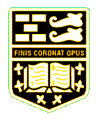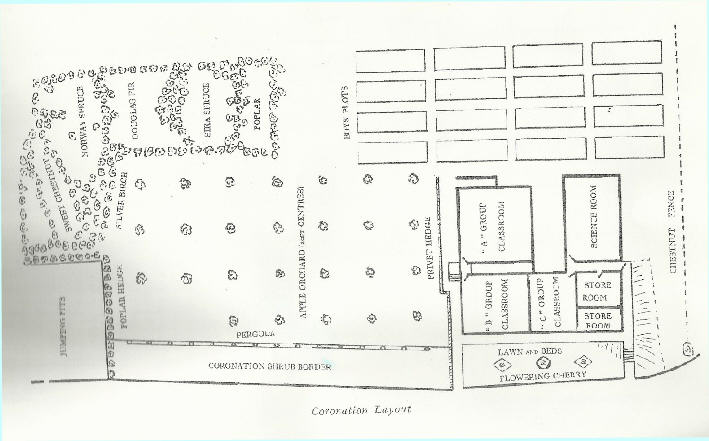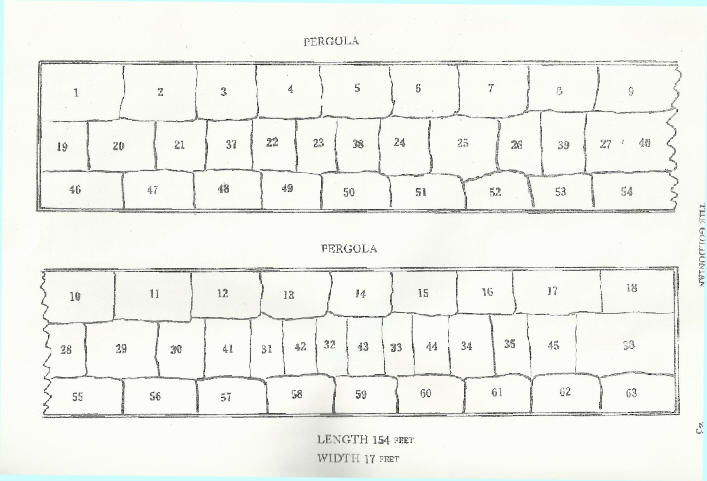|
GOLDING’S CORONATION GARDEN
For many years the area of land opposite the Gymnasium was used for Free Time Allotments, and part of this was known by the
familiar name "Pets Corner". Although the pleasure gained by the boys from, these activities could never be measured, it must be
admitted that the site never showed off the school entrance to the best advantage. Since the need for classroom space has always
been a major problem, this position has now been relieved, by the building there of a schoolroom block, now accommodating
A. B. and C. groups, plus a Science Room.
After the completion of the new block, it was obvious that the remaining land—rather resembling a bomb-site—-should be
developed, and it was. decided that as this was Coronation year, the area should be laid out as gardens to commemorate this
historic occasion. The plans having been inspected by the Goldings Subcommittee, and the suggested scheme approved, the work
was then tackled by the Gardening Department.
After ploughing, discing, bulldozing, and the sacrifice of much honest sweat, the scene has now been transformed into a fairly
Creditable Coronation Garden.
Featured on the drive side is a mixed flowering shrub border, backed by a pergola planted up with a cream flowered rampant
creeper known as the Russian Vine (Polygonum Baldschuanicum) which grows at the rate of 30 to 40 feet in one season.
Surrounding the front side of the actual building is grass in which flower beds have been set. In each bed a fine specie of
flowering cherry, (Prunus Serrula Albo-Rosea) has been planted, and it may be significant to mention, that they were budded by
the department in 1951 on to the common cherry stock. On the lower half of the scheme, an apple orchard, and a coppice of
forest: trees add a background, and included in the coppice are 12 silver birch trees which were presented for this special purpose
by Mr. Tetley, the Chairman of the Goldings Sub-committee. To complete the Layout, approximately 16 plots will be allocated
to keen young gardeners, to try their skill this season.
For the benefit of those who have contributed to the shrubbery, a plan, of the border is shown in the diagrams below.
|



